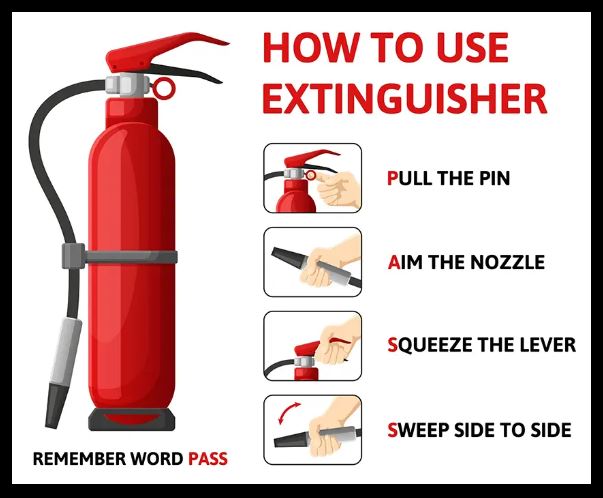Fire extinguishers are essential tools in the first line of defense against fire emergencies. Found in homes, schools, offices, and industrial settings, they are designed to control small fires before they escalate. But simply owning a fire extinguisher isn’t enough. Without the proper knowledge, using one can be dangerous or even life-threatening.
Effective fire extinguisher safety means understanding not only how to use the device, but also when, where, and which type to use.
The Importance of Fire Extinguisher Safety
When used correctly, fire extinguishers can:
- Save lives
- Prevent small fires from becoming large disasters
- Minimize property damage
However, misuse can:
- Worsen a fire
- Cause injury or death
- Trigger explosions or electrocution
Types of Fire Extinguishers and Their Uses
Using the wrong extinguisher can be ineffective or dangerous. Know which type to use:
| Class | Fire Type | Examples |
|---|---|---|
| A | Ordinary combustibles | Wood, paper, cloth |
| B | Flammable liquids | Gasoline, oil, grease |
| C | Electrical fires | Appliances, wiring |
| D | Combustible metals | Magnesium, titanium (industry) |
| K | Cooking oils/fats | Deep fryers, kitchens |
⚠️ Warning: Never use a water-based (Class A) extinguisher on Class B (oil) or Class C (electrical) fires—it can cause electrocution or spread the fire.
How to Use a Fire Extinguisher: The PASS Method
The easiest and most effective way to remember how to use a fire extinguisher is the PASS technique:
- P – Pull the pin to unlock the extinguisher and break the tamper seal.
- A – Aim the nozzle or hose at the base of the fire—not the flames.
- S – Squeeze the handle to discharge the extinguishing agent.
- S – Sweep the nozzle from side to side, covering the base of the fire evenly.

🔥 Pro Tip: Always keep your back to the nearest exit while attempting to fight a fire. If the fire grows or you feel unsafe, evacuate immediately.
Risks of Improper Use
Fire extinguishers can become hazards themselves if misused or neglected:
- Explosion – Pressurized canisters can burst if damaged or overheated.
- Inhalation – CO₂ and dry chemical types can cause breathing issues in enclosed spaces.
- Slip Hazards – Residue can create slick surfaces.
- Chemical Exposure – Some agents can irritate the skin, eyes, and lungs.
- Delayed Evacuation – Trying too long to extinguish a fire can cost precious escape time.
- Electrocution – Using water on electrical fires can be deadly.
Maintenance and Inspection Best Practices
A fire extinguisher is only useful if it works properly when needed.
Monthly Visual Checks:
- Pressure gauge in green
- Pin and tamper seal intact
- Hose/nozzle undamaged
- No visible rust or leakage
Annually:
- Professional servicing and tagging
After Use:
- Recharge or replace, even if only partially used
📍 Make sure all extinguishers are mounted in visible, accessible areas—never behind furniture or inside locked cabinets.
Training and Preparedness: Key to Effective Use
Everyone in a building should know:
- What type of extinguisher to use for each fire class
- How to use one with the PASS method
- When to fight a fire and when to flee
- Emergency exits and safe evacuation routes
Tips for Readiness:
- Conduct regular fire drills
- Post clear signage and visual guides
- Practice with training (non-charged) extinguishers
Conclusion
Fire extinguishers are powerful life-saving tools—but only when used correctly. Improper use can turn a lifesaver into a hazard. Practicing fire extinguisher safety means:
- Choosing the right type
- Maintaining your equipment
- Training regularly
🔥 Fire safety isn’t just about putting out fires—it’s about making informed, calm decisions when it counts most.

Leave a Reply